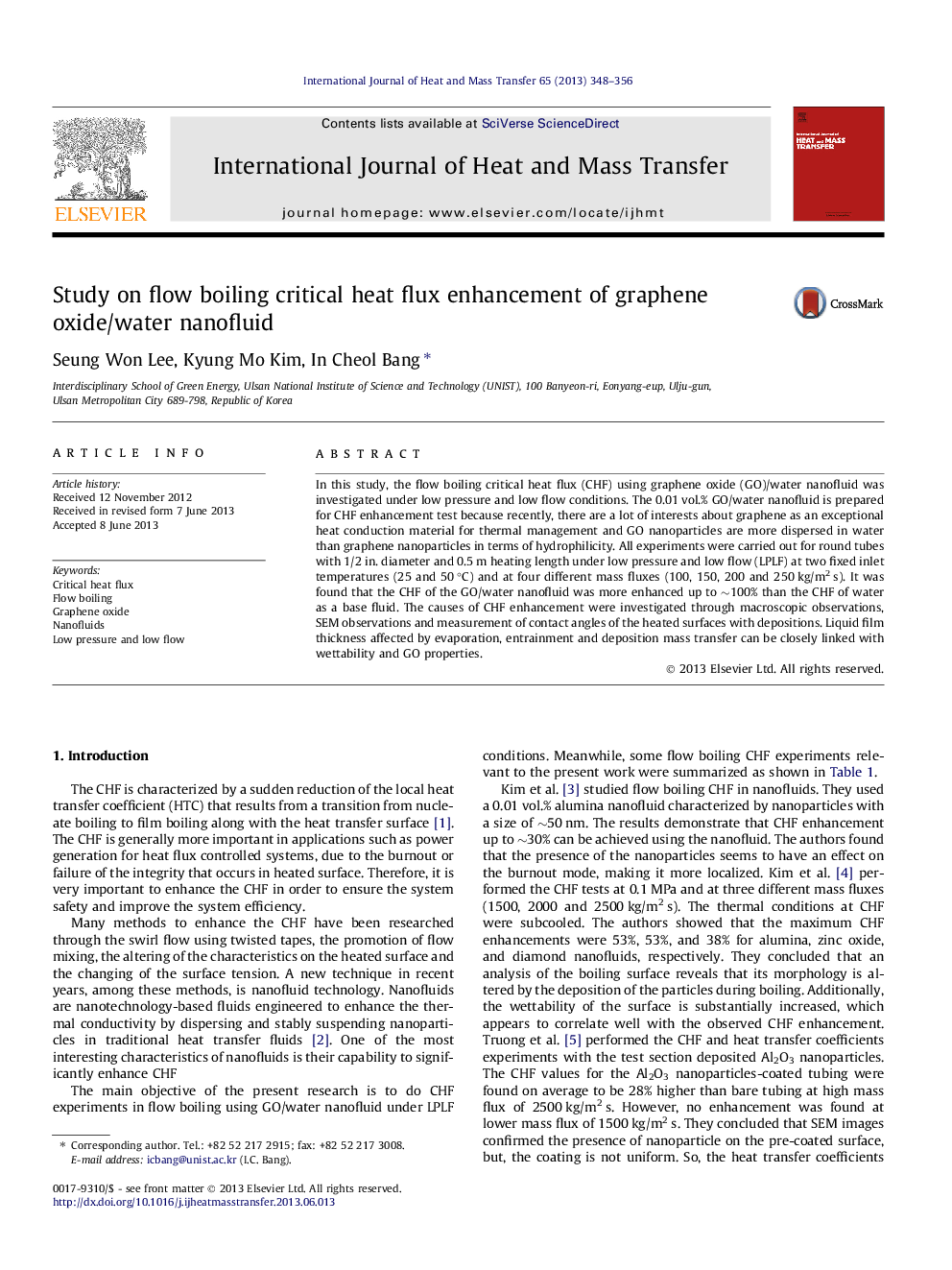| Article ID | Journal | Published Year | Pages | File Type |
|---|---|---|---|---|
| 7058529 | International Journal of Heat and Mass Transfer | 2013 | 9 Pages |
Abstract
In this study, the flow boiling critical heat flux (CHF) using graphene oxide (GO)/water nanofluid was investigated under low pressure and low flow conditions. The 0.01 vol.% GO/water nanofluid is prepared for CHF enhancement test because recently, there are a lot of interests about graphene as an exceptional heat conduction material for thermal management and GO nanoparticles are more dispersed in water than graphene nanoparticles in terms of hydrophilicity. All experiments were carried out for round tubes with 1/2 in. diameter and 0.5 m heating length under low pressure and low flow (LPLF) at two fixed inlet temperatures (25 and 50 °C) and at four different mass fluxes (100, 150, 200 and 250 kg/m2 s). It was found that the CHF of the GO/water nanofluid was more enhanced up to â¼100% than the CHF of water as a base fluid. The causes of CHF enhancement were investigated through macroscopic observations, SEM observations and measurement of contact angles of the heated surfaces with depositions. Liquid film thickness affected by evaporation, entrainment and deposition mass transfer can be closely linked with wettability and GO properties.
Related Topics
Physical Sciences and Engineering
Chemical Engineering
Fluid Flow and Transfer Processes
Authors
Seung Won Lee, Kyung Mo Kim, In Cheol Bang,
